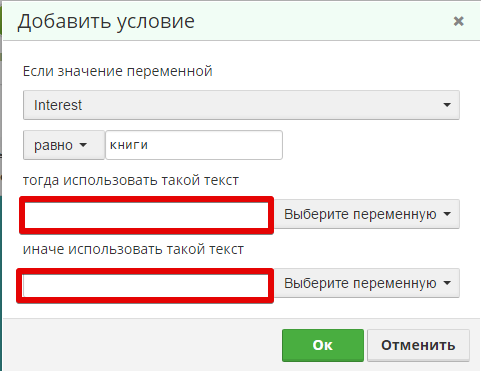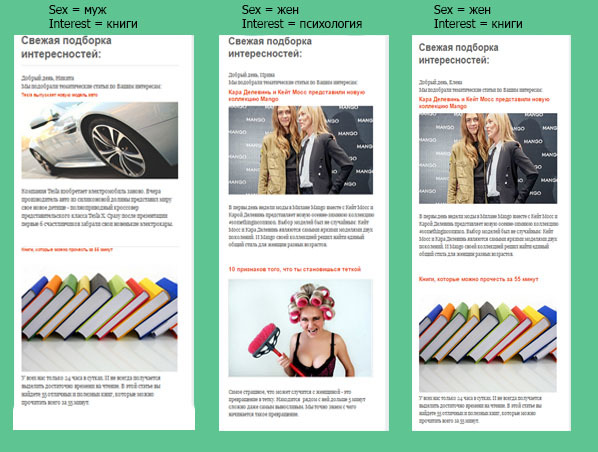How to find an approach to each subscriber using dynamic content

Dynamic content is the content of the message, which varies depending on the interests or behavior of users. It seems that this content was specifically created for this particular subscriber at the moment of viewing.
Benefits of dynamic content:
- Responds to user needs;
- More accurately responds to requests;
- Interactive, the user can to some extent manage the content;
- Attracts more customers, since you act as an assistant in finding the right product;
- Updates are visible immediately;
- Dynamic content does not require technical knowledge to create dynamic content.
Dynamic content can be divided into 3 types:
I - content based on data that subscribers reported about themselves by filling out a profile or participating in a survey (name, gender, age, place of residence, occupation, preferences, etc.).
II - content based on the data that we collected about subscribers (history of interaction with the newsletter and the site, IP address, device type, email client, opening time of the letter, etc.).
III - content based on the data that we have in any case (current time and date, advertisements for display, "service" links, etc.).
How to create dynamic content using conditions for variables?
In the editor of the SendPulse mailing list service, you can create dynamic content by adding a condition for variables in address books.
In order to create dynamic content, first of all, in the address book there must be filled in data on variables, according to the criteria of which you want to separate the distribution blocks.
For example, we selected variables: gender {{Sex}} and interest {{Interest}} .

To add a condition on a variable, click on the corresponding button in the editor.

In the dialog box that opens, enter the necessary criteria.

In order for the finished letter to change not only the text, but the finished block, you need to enter the html code of the finished block (with a picture, text, formatting and other elements) in the text box.
As a result of adding two conditions according to our criteria, we get the following pattern:

Blocks according to the criteria will be entered with a simple command || IF: .... || || ELSE || .
In finished form, after sending the message, we will get these mailings:

What should be avoided in the process of preparing dynamic mailings?
- Do not show the user the content that he has already downloaded, seen or read. Even if this content is relevant.
- Do not tell the potential buyer about your company again and again if he has already subscribed to you. Better give content useful to him.
- Do not use inaccurate data (for example, if you are not sure about the name of the client or his gender, it is better not to use this data to create letters).
- Do not abuse personalization. Before using user data for dynamic content, think about how this will help promote the user in the sales funnel, will it be annoying.
Dynamic content in the newsletter can increase the amount of work on the campaign, but also provide a higher response than ordinary "static" letters.
Using dynamic content, email ceases to be a means of mass communication - the same thing to everyone. It becomes what it should be ideally: a highly accurate one-on-one communication tool that offers the subscriber the most relevant content at the current time.
 Irina Chugai, marketer of the SendPulse mailing list service
Irina Chugai, marketer of the SendPulse mailing list service